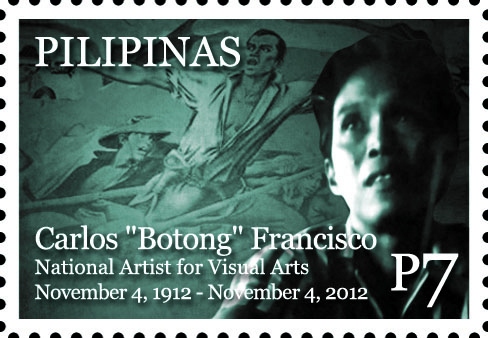CARLOS “BOTONG” FRANCISCO: PHILIPPINE MASTER OF SYNTHETIC CUBISM
“Filipino Struggles through History” (1964-68) is a mural series by Philippine National Artist Carlos “Botong” Francisco (1912-69). It consists of ten panels (oil on canvas) collectively measuring 2.7 meters (8.9 ft) high and 79.4 meters (260 ft) wide.
Commissioned in 1964 by the Manila City government under Mayor Antonio Villegas, it was installed in the Bulwagang Katipunan (renamed Bulwagang Gat Antonio Villegas) of the Manila City Hall in 1968. The masterpiece was removed for restoration in 2013.
In 2015 seven of ten panels were installed in the session hall of the original Philippine Senate, now the National Museum. The last three panels are today displayed in the Vicente and Carmen Fabella Hall of the same museum.
The first seven panels depict a highly colorful historical panorama, showing, among others, major historical figures like Rajah Sulayman, Francisco Balagtas, Jose Rizal, and Andres Bonifacio, together with scenes of the Spanish conquest, the British occupation, the martyrdom of Rizal, the founding of the Katipunan, the Philippine-American conflict, the oath-taking of President Quezon, the Japanese invasion, and the beginning of postwar Philippine independence.
The last three panels in the Vicente and Carmen Fabella Hall show Mayor Villegas’ progressive vision for the city of Manila.
Botong Francisco was among the first group of Philippine visual artists, led by Victorio Edades and Galo Ocampo, who steered Philippine visual arts away from the Romantic and Realist influences of Fernando Amorsolo and Guillermo Tolentino and in the direction of the revolutionary Modernism ongoing in the West.
Botong’s style may be described as a type of Synthetic Cubism uniquely combining abstract elements with highly skillful quasi-Realist rendering. Masterfully stylized and alluringly colored, his smooth, translucent brushwork evokes Vicente Manansala’s famous “Transparent Cubism.”
Broadly understood, Realism in the visual arts seeks to accurately depict the subject as it is objectively observed so that the subject is readily identifiable in its visual representation.
Botong’s work also shows the Romantic traits of an earlier period by recalling Amorsolo’s paintings with their idealized, emotive, and historical character.
Decades since Botong’s death have revealed him to be inexorably visionary. Doubtless, he is a master.




%20by%20Botong%20Francisco%2013.jpg)









%20by%20Botong%20Francisco%202.jpg)
%20by%20Botong%20Francisco%204.jpg)

Botong Francisco stamp is a public domain image.
ReplyDeleteImage link:
https://commons.wikimedia.org/wiki/File:Botong_Francisco_2012_stamp_of_the_Philippines.jpg
Gonzalinho